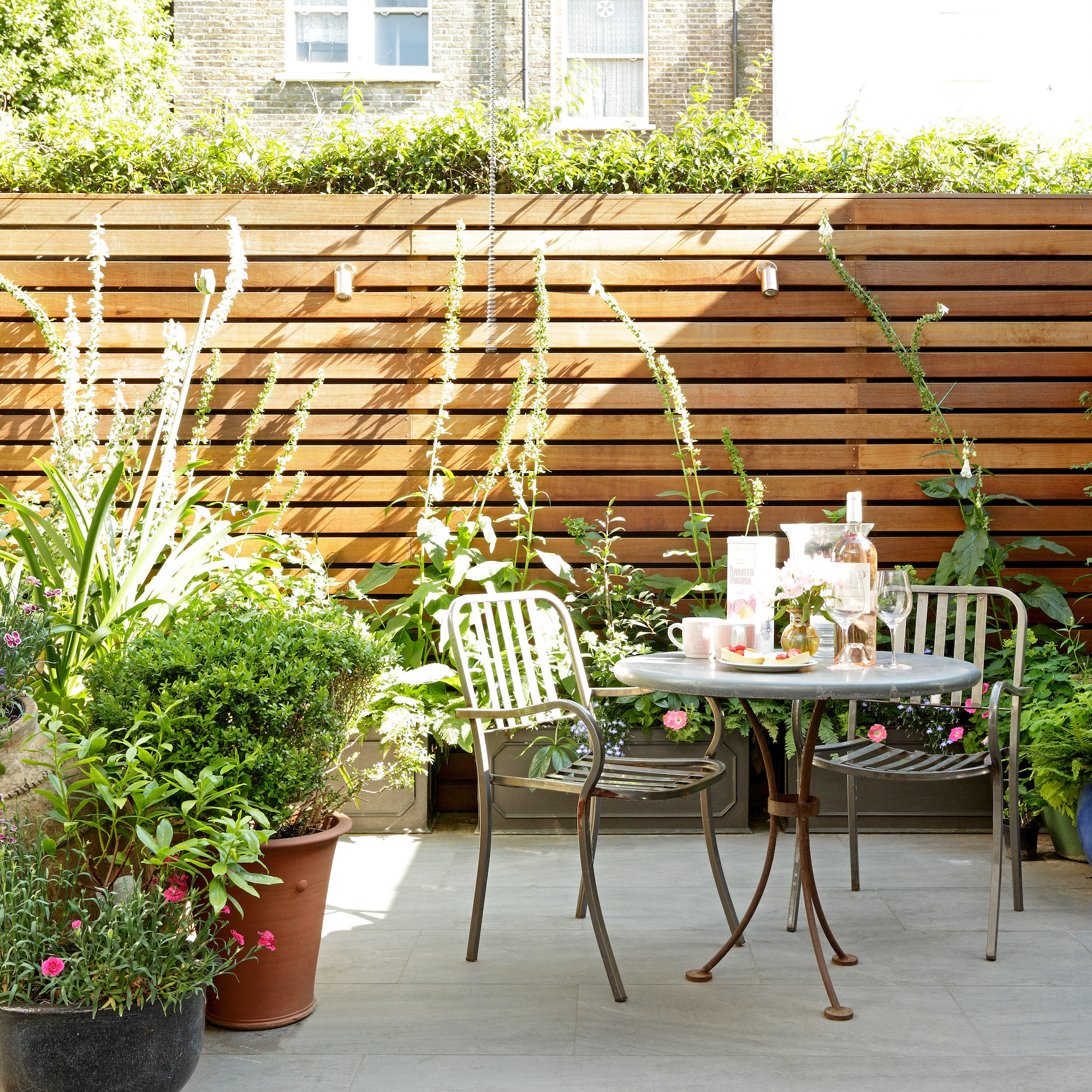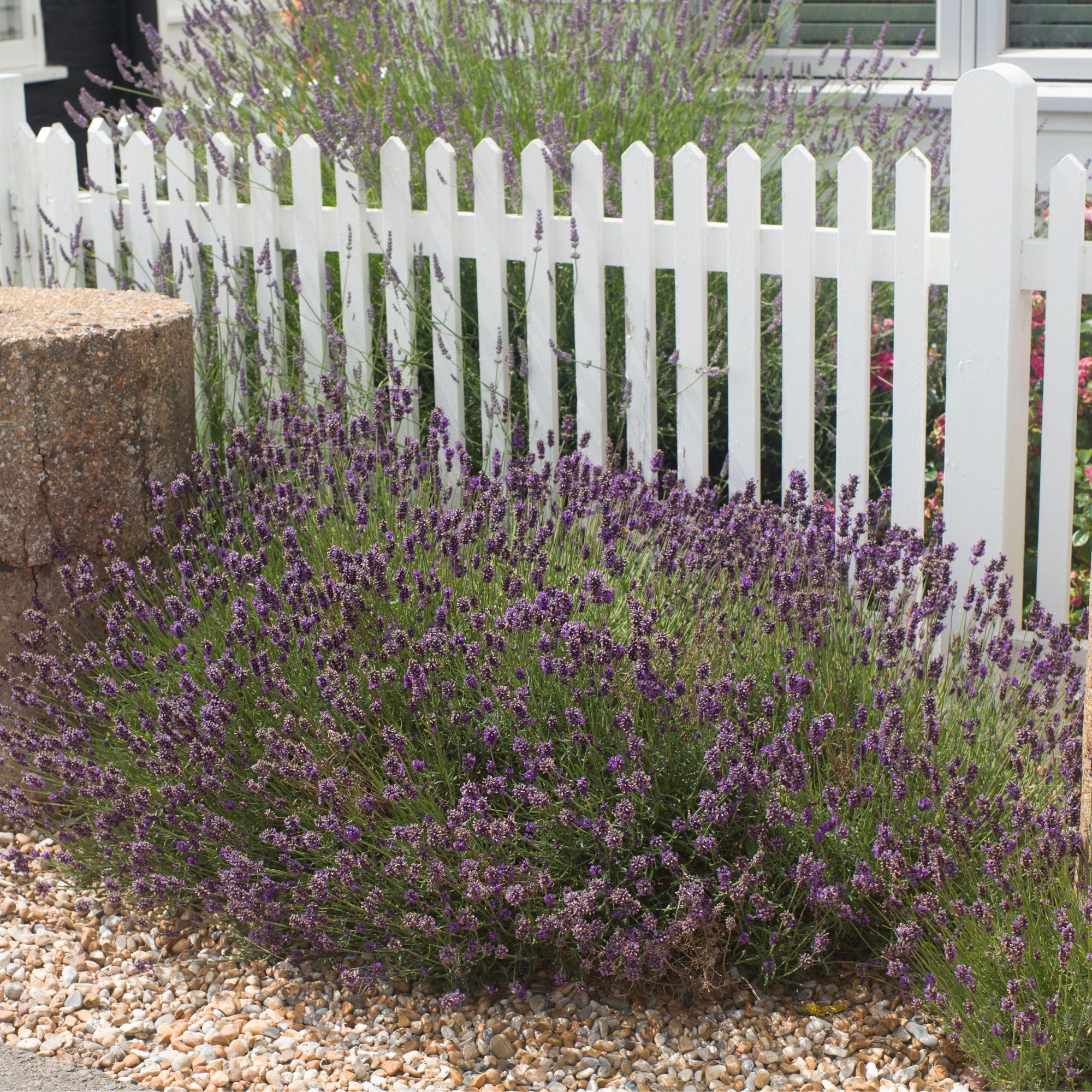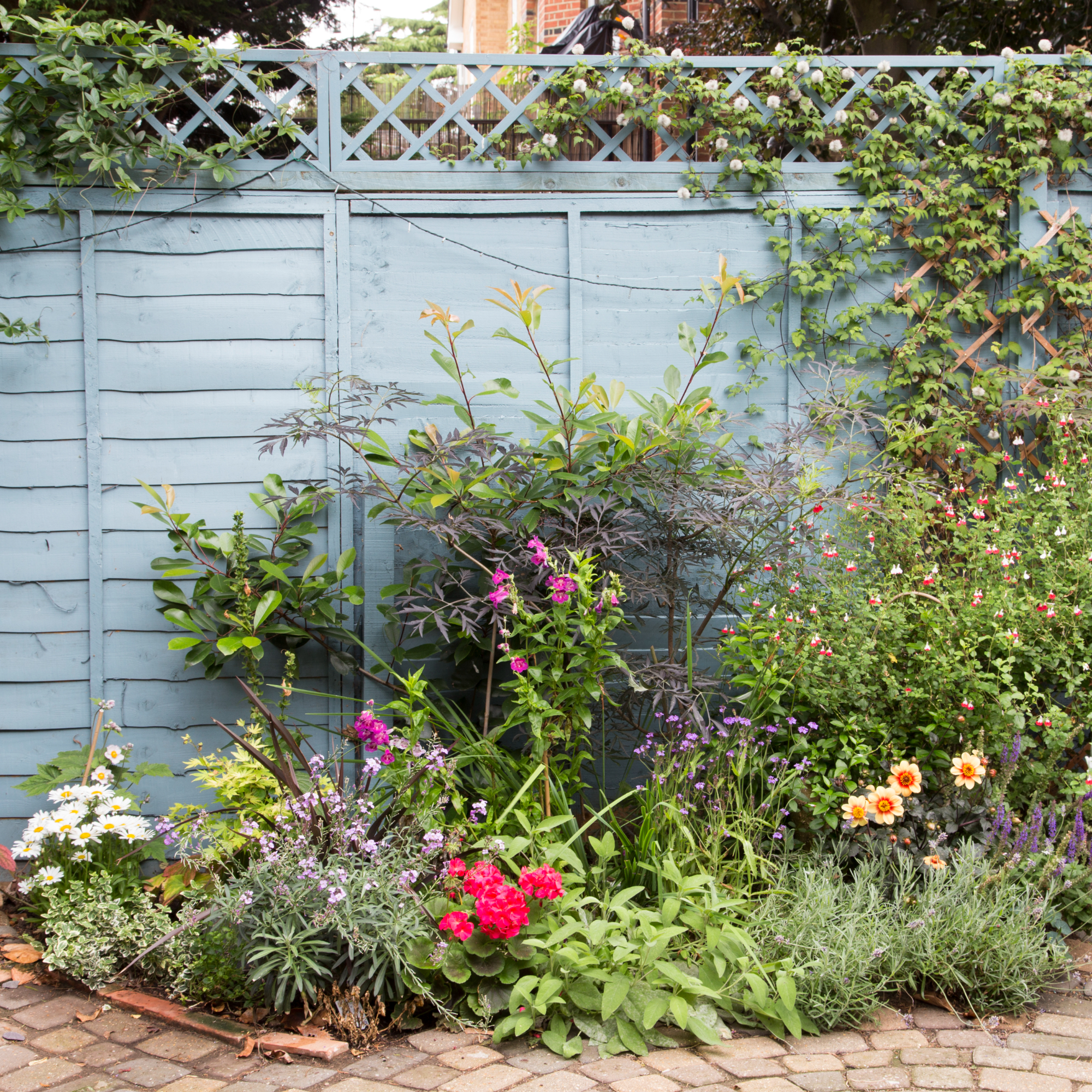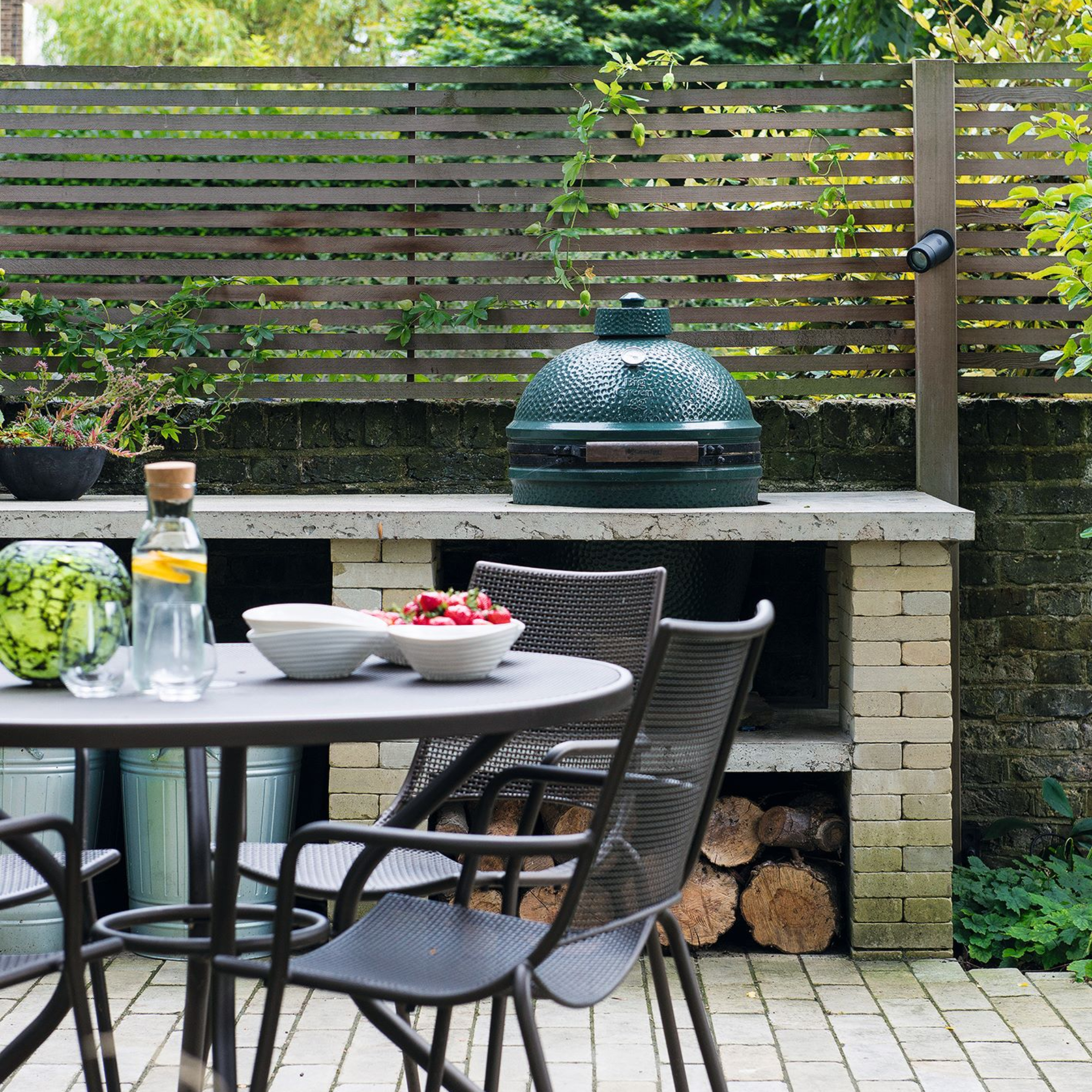
Although fences are an essential part of your property, they can also be costly - and most of the time, they break or need replacing at the worst possible time. But what you might not realise is that you don’t always need to rely on overly expensive cowboy builders to fix a fence. Sometimes, you can do it yourself.
Yes, while you may have big garden fence ideas, many people find themselves in a situation where they have no control over their fences. You may be restricted by planning permission rules, you might not know which fence is yours, and you may find that the weather (and general old age) leaves your fence in a vulnerable position.
Of course, fixing your fence should be a priority, but many delay this task because they assume it’ll be expensive and time-consuming. However, with these expert-approved tips, you can restore your fences to their former glory without spending a fortune - and without paying someone else to do it for you.
How to fix a fence

‘Fixing a fence involves several important tasks to ensure it remains sturdy and functional,’ explains Murray Michel, garden maintenance expert at Clear Amber.
‘Mid-June's dry weather is ideal for these repairs, ensuring treatments like wood sealants dry properly.’ So, if fixing your fence is on your to-do list for this summer, this is all the information you need to know.
1. Assess the damage

Before you whip out your hammer or start ripping your fence out of the ground, it’s important to assess the extent of the damage. After all, there’s a big difference between rotten posts and a broken arris rail.
‘With a thorough inspection of the fence, identify the key issues such as loose or broken boards, damaged posts, rusted hardware or rotten wood,' advises Scarlett Wyatt from Wyatt Fencing.
Of course, many problems will be visible from afar (for example, if your fence has fallen down as a result of storm damage), but it’s still a good idea to get up close and personal to look for any smaller details that may cause problems later down the line if not fixed.
If you have climbing plants growing up your fence, you should remove them if you suspect your fence is broken. Ivy is particularly difficult to remove, so you’ll need to know how to kill ivy on a fence during this stage.
After this initial assessment, you should be realistic. While we like to believe that everyone has a DIY bone in their body, you also need to understand your limitations and the scope of the work ahead of you. As Scarlett says, ‘DIY projects can be rewarding, but some major fence repairs are best left to the pros.’
If you feel the job ahead of you is outside your remit, search for a trusted professional who can do it. And remember, always check the reviews before giving them the go-ahead or paying any money.
2. Replace rotten panels or posts

Rotten fences are extremely common in the UK - especially during the winter when the wind and rain batter panels and posts daily. And while there are many jobs to do in the garden during winter, you should aim to fix a rotten fence before the cold snap kicks in.
‘Rotting wood will compromise the integrity of your fence,' warns Jenny Davis, head of marketing for Forest Garden. But it’s important to note that rot can affect both the posts and the panels. So, you may have to replace both if the rot has spread.
‘Over time, rotting fence posts can eventually snap and leave you with a fallen fence. It’s worth keeping an eye out for rotting so you can replace the post before it gives in,’ explains Dan Hancock, managing director at Mesh Direct. ‘Signs to look out for include discolouration, chips, and cracks in the surface of the post.’
Murray also urges homeowners to check the bases of their fence panels if they suspect the panels themselves are rotten, too - as this is normally where you can spot the first signs of rot. Then, he says, ‘Replace rotten panels by unscrewing and installing new ones with galvanised screws.’
If you need to replace your fence post, this B&Q offering should do the trick. It's even been pressure treated to extend its lifetime and protect against future rotting.
This easy-to-install fence panel has been dip treated to ensure longevity and reduce maintenanceIt. It also comes with a guarantee of 10 years when you buy from B&Q.
Coming in a pack of 200, these screws have a durable double hardened core, are 50mm in length, and are fully threaded ready to be used to fix your fence.
3. Fix loose panels and posts

If you can’t spot any signs of rot but your fence looks a little wonky, you may have loose panels or posts. ‘This is one of the most common causes for a fence not staying upright,' explains Jenny.
In an ideal world, you won’t have to replace your posts - whether wooden or concrete. In fact, in most cases, you’ll just need to buy some concrete and fill in the gaps. ‘Concrete posts which have become loose in the ground should be dug out and reset in fresh concrete,' says Jenny.
However, if wooden posts have deteriorated to the point where they aren’t salvageable, you may have to replace them entirely.
‘If you’re replacing posts, dig a hole that’s at least one-third the height of the post,' advises Scarlett. 'For instance, for a 6-foot fence post, dig a hole 2 feet deep.’
‘Place the new post in the hole, using a level to ensure it is straight. Mix the concrete according to the instructions on the bag and pour it around the post, leaving a few inches of space at the top for soil. Let the concrete set before attaching any boards or panels.’

But what about the fence panels? Well, once again, this depends on the extent of the damage. This is a relatively easy fix if your fence panels have only been loose for a short time.
‘Replacement fence panel battens and caps are available to replace – and reinforce any panels that are damaged,’ explains Jenny.
But this isn’t a one-size-fits-all solution to fixing a fence. ‘If damage is extensive, the whole panel should be replaced,' cautions Jenny. 'Remember, if the high winds hit, fences tend to act like sails in the wind. They can literally get carried away.’
Just make sure that any replacement fence panels match the size (and ideally the style) of your old ones.
If you need some cement to fix your loose fence posts, this concrete is rapid setting and easy to use. All you need to do is add water.
You can't dig new post holes without a spade, and this McGregor spade has a lightweight fibreglass shaft coupled with a carbon steel spade head.
If you want to add an extra je ne sais quoi to your new or newly-fixed fence posts, these caps will do that. This pack contains 13 wooden caps.
4. Replace the arris rails

Although many modern wooden fences don’t have arris rails, many older fences do. And if these break or fall, you could face problems.
'One common casualty of storm damage is the arris rail, which is the horizontal support rail at the back of the fence,' says Dan from Mesh Direct.
Without this arris rail, the fence will likely start to bow. Over time, this can ultimately cause damage to the fence panel itself, so it’s worth fixing it as soon as possible.
‘Fortunately, replacing this is a job you can easily do yourself,’ adds Dan. ‘Fully detach the broken rail from the fence, then place the new arris rail between the posts at the same height as the old one and attach the rail to the fence post, using a spirit level to make sure it is aligned correctly.’
Garden maintenance expert Murray also suggests using galvanised brackets to attach this new arris rail to the posts so you can ensure that it won’t come down again anytime soon.
If you need to completely replace your broken arris rail, this particular offering comes in at (L)2.4m (W)75mm (T)37.5mm. It also comes with a 10-year guarantee.
A spirit level is always handy when you're doing DIY, and it's particularly important when fixing a fence. It also has three vials which can measure horizontally, vertically, and at 45 Accuracy: + /- 0.15%.
If you want to ensure that your arris rail will stay put for years on end, galvanised brackets are the way to go. These brackets are suitable for boards of 40mm.
5. Inspect and preserve

If you’ve completed all (or some) of the above, you can definitely give yourself a round of applause. But if you want to make sure that your newly-fixed fence lasts a long time, Scarlett from Wyatt Fencing would suggest giving it one last once-over. Then, you can preserve it.
'As you walk along the fence, make sure to check all boards are securely attached, and your fence is stable and level, making adjustments where necessary.’
‘To protect your fence and enhance its appearance, consider applying a wood preservative, paint, or stain. This step helps to extend the life of the wood by protecting it from the elements.’
During this step, you can also choose to paint your fence. And if you have a small garden, make sure to choose one of the fence colours that makes your garden look bigger.
To preserve your newly-fixed fence, add a layer of this fence preserver. Just be mindful that it takes 24 hours to dry and will cover up to 8 m² per litre on average.
Finished fixing your fence and want to make a statement? Well, you could stray away from the traditional brown and opt for this seaglass shade instead.
If painting isn't your bag, this fence stain is the more traditional option. It's also quick-drying and showerproof in one hour - making it perfect for the British weather.
6. Clear the surroundings

Knowing how to fix a fence is largely about fixing the fence itself but also preventing any future damage. That’s why experts suggest taking time to clear the surroundings after you’ve completed the above.
‘A damaged fence can affect nearby structures like decking by collapsing or creating uneven foundations, leading to costly repairs,' says Murray. 'Maintaining a sturdy fence protects your garden and property.’
So, cut back any trees that threaten to overhang your fence and remove any remaining climbing plants that could weaken the panels using pruners like these Spear & Jackson Razorsharp Hand Shears from Argos.
How to fix a composite fence
You might already know that composite decking is becoming increasingly popular, but so have composite fences. But how do you fix a composite fence? Well, thankfully, it’s a lot easier than fixing a wooden fence.
‘Unlike fence panels made of wood, composite fence panels are more hard-wearing, meaning they stand up much better to a beating by the elements,' explains Beth Boulton, marketing director at home improvement specialist Eurocell.
‘Composite fence panels are often made up of a number of composite fence boards rather than being sold as one solid panel. This modular design means that boards in need of repair can be easily replaced.’
‘It's simply a case of lifting out the boards until you find the damaged one, and swapping it with a new board, before slotting in your undamaged panels on top. This means the whole process is relatively inexpensive, as it's unlikely that your entire fence panel will need to be replaced in one go.’
Yes, it really is as easy as that.

FAQs
Can you replace a fence yourself?
Yes, you can! It’s relatively easy to replace a fence if you already have the existing fence as a reference and the infrastructure in place to do so. For example, it’ll be much easier if the holes for the fence posts are already dug and can be reused when installing the new fence.
However, if you’re replacing a damaged fence that was beyond repair, you may find it more difficult as you may struggle to use the old fence as a guideline.
Because of this, you should assess the situation before making any decisions and also understand your own capabilities. In some cases, it may be easier to call a professional to replace the fence for you.
How do you straighten a bowed fence?
This all depends on how bowed the fence actually is. In extreme cases, you may have to replace the fence post or panel entirely.
In other cases, you may be able to straighten it yourself. If the bowed fence has been caused by loose fence posts, you may be able to fix the problem by filling the hole with cement and straightening it that way.
If the bowed fence has been caused by a broken or missing arris rail, you should replace it and use galvanised brackets to secure it properly.
Well, there you have it. That’s how to fix a fence yourself!







